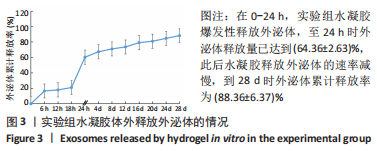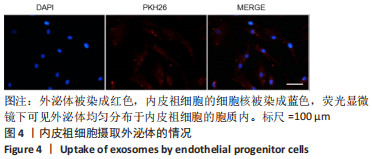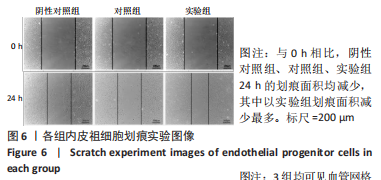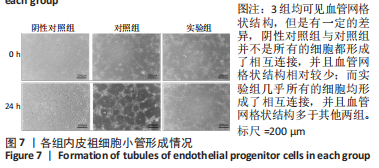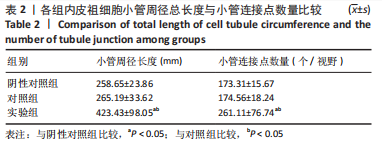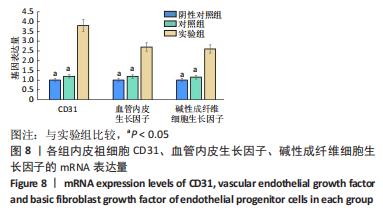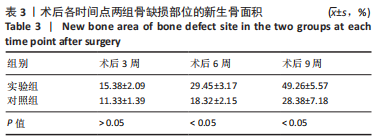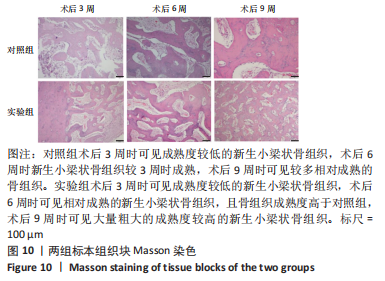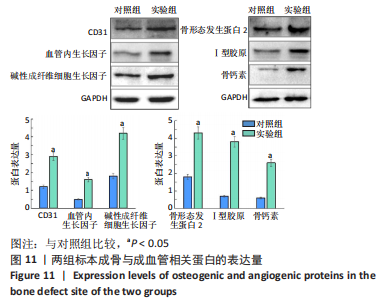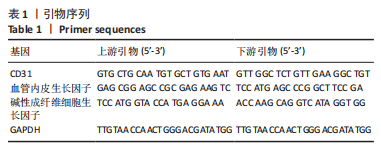[1] AGHALOO T, PI-ANFRUNS J, MOSHAVERINIA A, et al. The Effects of Systemic Diseases and Medications on Implant Osseointegration: A Systematic Review. Int J Oral Maxillofac Implants. 2019 Suppl;34: s35-s49.
[2] OVERMANN AL, APARICIO C, RICHARDS JT, et al. Orthopaedic osseointegration: Implantology and future directions. J Orthop Res. 2020;38(7):1445-1454.
[3] TAŞDEMIR U, KIRTAY M, KELEŞ A, et al. Autogenous Tooth Bone Graft and Simvastatin Combination Effect on Bone Healing. J Craniofac Surg. 2020;31(8):2350-2354.
[4] TASDEMIR U, IYILIKÇI B, AKTÜRK MC, et al. The Effect of Autogenous Bone Graft Mixed With Recombinant Human Vascular Endothelial Growth Factor on Bone Regeneration. J Craniofac Surg. 2021;32(6):2233-2237.
[5] BALDWIN P, LI DJ, AUSTON DA, et al. Autograft, Allograft, and Bone Graft Substitutes: Clinical Evidence and Indications for Use in the Setting of Orthopaedic Trauma Surgery. J Orthop Trauma. 2019;33(4):203-213.
[6] SUHARDI JV, MORGAN DFA, MURATOGLU OK, et al. Radioprotection and cross-linking of allograft bone in the presence of vitamin E. J Biomed Mater Res B Appl Biomater. 2020;108(5):2354-2367.
[7] CHEN MY, FANG JJ, LEE JN, et al. Supercritical Carbon Dioxide Decellularized Xenograft-3D CAD/CAM Carved Bone Matrix Personalized for Human Bone Defect Repair. Genes (Basel). 2022;13(5):755.
[8] XIAO Y, GU Y, QIN L, et al. Injectable thermosensitive hydrogel-based drug delivery system for local cancer therapy. Colloids Surf B Biointerfaces. 2021;200:111581.
[9] WANG Z, ZHANG Y, YIN Y, et al. High-Strength and Injectable Supramolecular Hydrogel Self-Assembled by Monomeric Nucleoside
for Tooth-Extraction Wound Healing. Adv Mater. 2022;34(13): e2108300.
[10] SEO JW, SHIN SR, LEE MY, et al. Injectable hydrogel derived from chitosan with tunable mechanical properties via hybrid-crosslinking system. Carbohydr Polym. 2021;251:117036.
[11] BHATTACHARJEE M, ESCOBAR IVIRICO JL, KAN HM, et al. Injectable amnion hydrogel-mediated delivery of adipose-derived stem cells for osteoarthritis treatment. Proc Natl Acad Sci U S A. 2022;119(4): e2120968119.
[12] ZHANG L, JIAO G, REN S, et al. Exosomes from bone marrow mesenchymal stem cells enhance fracture healing through the promotion of osteogenesis and angiogenesis in a rat model of nonunion. Stem Cell Res Ther. 2020;11(1):38.
[13] YU L, SUI B, FAN W, et al. Exosomes derived from osteogenic tumor activate osteoclast differentiation and concurrently inhibit osteogenesis by transferring COL1A1-targeting miRNA-92a-1-5p. J Extracell Vesicles. 2021;10(3):e12056.
[14] LI Z, WANG Y, LI S, et al. Exosomes Derived From M2 Macrophages Facilitate Osteogenesis and Reduce Adipogenesis of BMSCs. Front Endocrinol (Lausanne). 2021;12:680328.
[15] 刘 印,刘琴,陈娇,等.可注射葡萄糖酸内酯-海藻酸钠/β-磷酸三钙-聚乙二醇复合水凝胶支架的性能评价[J].中国组织工程研究, 2022,26(27):4308-4313.
[16] SEVERINO P, DA SILVA CF, ANDRADE LN, et al. Alginate Nanoparticles for Drug Delivery and Targeting. Curr Pharm Des. 2019;25(11):1312-1334.
[17] JI J, CHEN G, LIU Z, et al. Preparation of PEG-modified wool keratin/sodium alginate porous scaffolds with elasticity recovery and good biocompatibility. J Biomed Mater Res B Appl Biomater. 2021;109(9): 1303-1312.
[18] DING Z, XI W, JI M, et al. Developing a biodegradable tricalcium silicate/glucono-delta-lactone/calcium sulfate dihydrate composite cement with high preliminary mechanical property for bone filling. Mater Sci Eng C Mater Biol Appl. 2021;119:111621.
[19] WU S, KAI Z, WANG D, et al. Allogenic chondrocyte/osteoblast-loaded β-tricalcium phosphate bioceramic scaffolds for articular cartilage defect treatment. Artif Cells Nanomed Biotechnol. 2019;47(1): 1570-1576.
[20] VAHABZADEH S, BOSE S. Effects of Iron on Physical and Mechanical Properties, and Osteoblast Cell Interaction in β-Tricalcium Phosphate .Ann Biomed Eng. 2017;45(3):819-828.
[21] Kardan T, Mohammadi R, TAGHAVIFAR S, et al. Polyethylene Glycol-Based Nanocerium Improves Healing Responses in Excisional and Incisional Wound Models in Rats. Int J Low Extrem Wounds. 2021;20(3):263-271.
[22] MAZLOOM-JALALI A, SHARIATINIA Z, TAMAI IA, et al. Fabrication of chitosan-polyethylene glycol nanocomposite films containing ZIF-8 nanoparticles for application as wound dressing materials. Int J Biol Macromol. 2020;153:421-432.
[23] SHI L, ZHANG J, ZHAO M, et al. Effects of polyethylene glycol on the surface of nanoparticles for targeted drug delivery. Nanoscale. 2021;13(24):10748-10764.
[24] TAKEUCHI R, KATAGIRI W, ENDO S, et al. Exosomes from conditioned media of bone marrow-derived mesenchymal stem cells promote bone regeneration by enhancing angiogenesis. PLoS One. 2019;14(11): e0225472.
[25] WU D, CHANG X, TIAN J, et al. Bone mesenchymal stem cells stimulation by magnetic nanoparticles and a static magnetic field: release of exosomal miR-1260a improves osteogenesis and angiogenesis. J Nanobiotechnology. 2021;19(1):209.
[26] 管鹏飞,崔瑞文,王其友,等.负载骨髓干细胞来源外泌体的3D水凝胶通过调节免疫促进损伤软骨的修复[J].南方医科大学学报, 2022(4):528-537.
[27] 周欣,王颖,张馨欣.间充质干细胞外泌体-温敏水凝胶的制备及其在表皮创伤修复中的应用[J].中国医药工业杂志,2021,52(9): 1199-1207.
[28] AHN J, YOON MJ, HONG SH, et al. Three-dimensional microengineered vascularised endometrium-on-a-chip. Hum Reprod. 2021;36(10):2720-2731.
[29] KAMAT P, FRUEH FS, MCLUCKIE M, et al. Adipose tissue and the vascularization of biomaterials: Stem cells, microvascular fragments and nanofat-a review. Cytotherapy. 2020;22(8):400-411.
[30] LEI ZY, LI J, LIU T, et al. Autologous Vascularization: A Method to Enhance the Antibacterial Adhesion Properties of ePTFE. J Surg Res. 2019;236:352-358.
[31] TIAN Y, ZHU P, LIU S, et al. IL-4-polarized BV2 microglia cells promote angiogenesis by secreting exosomes.Adv Clin Exp Med. 2019;28(4): 421-430.
[32] YAN C, CHEN J, WANG C, et al. Milk exosomes-mediated miR-31-5p delivery accelerates diabetic wound healing through promoting angiogenesis.Drug Deliv. 2022;29(1):214-228.
[33] QI X, ZHANG J, YUAN H, et al. Exosomes Secreted by Human-Induced Pluripotent Stem Cell-Derived Mesenchymal Stem Cells Repair Critical-Sized Bone Defects through Enhanced Angiogenesis and Osteogenesis in Osteoporotic Rats.Int J Biol Sci. 2016;12(7):836-849.
[34] ZHA Y, LI Y, LIN T, et al. Progenitor cell-derived exosomes endowed with VEGF plasmids enhance osteogenic induction and vascular remodeling in large segmental bone defects. Theranostics. 2021;11(1):397-409.
|



